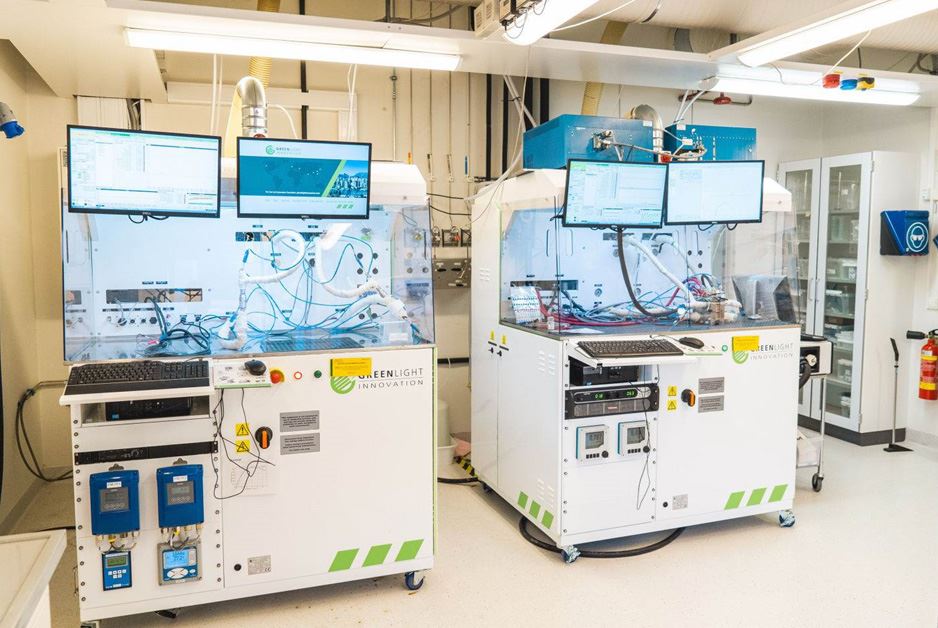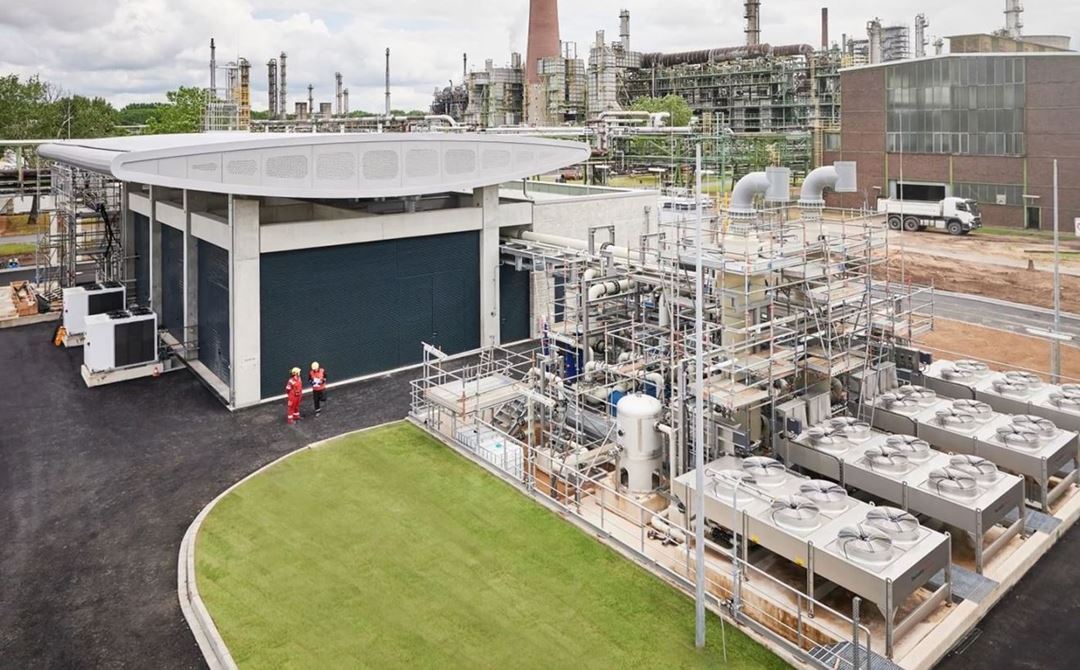Hydrogen has the potential to contribute to significant reductions in greenhouse gases from a variety of industries and processes, such as ammonia and steel production, as well as heavy transport by road, sea and air. Both incredibly powerful and versatile, it can be used as both an input factor and an energy carrier for other fuels.
With its multidisciplinary expertise and advanced hydrogen laboratories, SINTEF has conducted hydrogen research for several decades, covering the entire value chain for clean hydrogen, from production, storage and distribution, to end-use.
At Hydrogen Week 2024, SINTEF will showcase its expertise and the latest research developments, with a dedicated booth and contributions to several high-level sessions.
More than 40 EU funded projects
As part of its research and development efforts, SINTEF has partnered in or led more than 40 projects funded by the European Hydrogen Partnership.
– Through close to 20 years’ engagement and contribution to the establishment and operation of the European Hydrogen Partnership, SINTEF has devoted substantial strategic efforts shaping the priorities for the European research as well as industrial community. This engagement has also been pivotal for SINTEF’s competence building and providing cutting edge results from multidisciplinary research at the forefront of the scientific developments, says Steffen Møller-Holst, Vice President Marketing, Hydrogen Technologies at SINTEF.
Implementing hydrogen as an energy carrier is best achieved through international research cooperation. This enables discoveries and innovations beyond what one nation can achieve alone and ensures a high academic level. As such, SINTEF is also heavily engaged in international activities.
– Now more than ever, increased collaboration and innovation is vital for the establishment of a sustainable and independent European energy system. Hydrogen has the potential to be a pillar of such a system, yet the pace of development is currently far too slow. SINTEF leads and participates in numerous European and Norwegian R&D projects on the development of various parts of the hydrogen value chain, and we hope that this portfolio will only grow in the coming years, says Nils Anders Røkke, Executive Vice President Sustainability at SINTEF.

From research to large-scale demonstrations and deployment
Over the past two decades, SINTEF has been deeply engaged in European fuel cells and electrolysis research, from the fundamental development of new materials and components, via pilot projects and large-scale demonstrations, to market deployment and commercialisation.
HYSTAR is a spin-off from SINTEF that is based on an innovative, high-efficiency electrolyser design tailored for industrial scale. With a mission to reduce the cost of green hydrogen production, Hystar AS is teaming up with SINTEF and other partners to develop a complete industrialisation concept for high-volume production of PEM electrolyser stacks.
Examples on EU-funded projects, coordinated by SINTEF
- Through the project GAMER, and the subsequent project WINNER, SINTEF together with the project partners achieved the world´s first demonstration of high-temperature pressurised steam electrolysis using a proton ceramic electrolyser, delivering high efficiency and hydrogen at 10 bar, with excellent cell-level improvements. The innovative results are recognized by the EU Innovation Radar platform.
- The project H2Glass aims to decarbonize the glass and aluminium industries by replacing natural gas with hydrogen. Together with European industry partners, the project will develop a new technology platform for the combustion of hydrogen, supplied by a mobile electrolysis unit. This project is jointly funded by the project’s industry partners and the European Commission.
- This summer, Shell made a final investment decision on a 100-megawatt electrolyser plant at their Energy and Chemicals Park in Rheinland, Germany. The project, REFHYNE II, is utilizing low-temperature, proton exchange membrane (PEM)-based electrolysis to supply green hydrogen to the refinery’s production facility. REFHYNE II will become one of the largest clean hydrogen facilities in the world, producing up to 44,000 kilograms of renewable hydrogen per day.
FME HYDROGENi
In addition to partnering in or leading several EU-funded hydrogen projects, SINTEF leads the Centre for Environment-friendly Energy Research (FME) HYDROGENi, This eight-year FME unites a growing international network of over 50 partners from research and industry, with the intention of realising a sustainable hydrogen economy, based on both blue and green hydrogen. Their research focuses on four main research areas: cost-efficient and scalable production, transport and storage in Norway and Europe, end-use technologies, and safety and material integrity.

Complete hydrogen value chains
One of the biggest challenges with hydrogen is ensuring a comprehensive hydrogen infrastructure that connects production and end-use. This requires multiple parts of the value chain to be developed simultaneously.
The EU-led "Hydrogen Valley” initiatives aim to establish local operative value chains, with the hope that they will form the backbone of a fully realised hydrogen economy.
– Hydrogen valleys represent regional initiatives and projects which demonstrate how production sites are interlinked with end-use. In Mid-Norway, we are working on establishing such a hydrogen valley with a complete hydrogen infrastructure. The experiences we have gained here can provide valuable contributions back to Europe, says Kyrre Sundseth, Research Manager at SINTEF.
Value chain for hydrogen-based heavy transport
The EU-funded project H2Accelerate TRUCKS is the largest European project on developing and demonstrating heavy duty trucks powered by hydrogen. This SINTEF-led project aims to realise 150 hydrogen-powered trucks along the Trans-European Transport Network (TEN-T) in Europe. The Norwegian-based company Vireon is establishing hydrogen refuelling stations in the Nordic countries, providing fuel for heavy-duty, hydrogen-powered trucks.
– Cooperation between truck manufacturers, fuel suppliers and research institutions is essential for the project´s success. The simultaneous deployment of hydrogen refuelling stations is crucial in this project, as well as any other transportation project in Europe, says coordinator for H2AccelerateTRUCKS Steffen Møller-Holst.

The H2Accelerate TRUCKS project will deploy 150 fuel cell trucks across nine member states by 2029, paving the way for the commercialization of Europe´s hydrogen trucking system.
Meet us at Hydrogen week
Meet us at a SINTEF´s booth, number L40, at the Hydrogen Europe Research Pavilion, located in Hall 7.
HYDROGENi will be present with a booth in the Norway Pavilion (C90), hosted by Innovation Norway.
We will also be contributing to the following events and sessions, 20 November:
11:00–12:00: Innovation Forum (Hall 7)
Pre-normative research for standardisation
Speaker: Nils Anders Røkke, Executive Vice President Sustainability
12:00–13:00: Innovation Forum (Hall 7)
Hydrogen for mobility and synergies with end-use sectors
Co-moderated by Steffen Møller-Holst, Vice President Marketing, Hydrogen Technologies
16:00–17:00: High-Level Policy Conference Auditorium (Hall 11)
Session 10: Hydrogen for maritime and aviation applications: how to bring hydrogen closer to the market?
Speaker: Nils Anders Røkke, Executive Vice President Sustainability
More about SINTEFs research on hydrogen
Research on key areas within the clean hydrogen value chain is a significant part of SINTEFs daily scientific activities focused on developing new technology for green energy solutions. Since 2010, SINTEF has coordinated 20 projects in the European H2 partnerships. With that, SINTEF has the second largest R&D activity within H2 in Europe.
Read more about what SINTEF is doing in the field of hydrogen.
SINTEF´s High Temperature Hydrogen and fuel cell lab is equipped to test fuel cells and electrolysers operating up to 1100 °C and up to 10 bar. The Low Temperature Electrolysis and fuel cell laboratoy is one of the most complete and advanced laboratories for (low temperature) electrolyser and fuel cell testing in Scandinavia. It offers testing capabilities for both electrolysis and fuel cells from R&D-scale single cell testing up to kW-scale short stack testing. The laboratory is shared with NTNU and is one of the nodes of the Norwegian Fuel cell and Hydrogen Centre.





